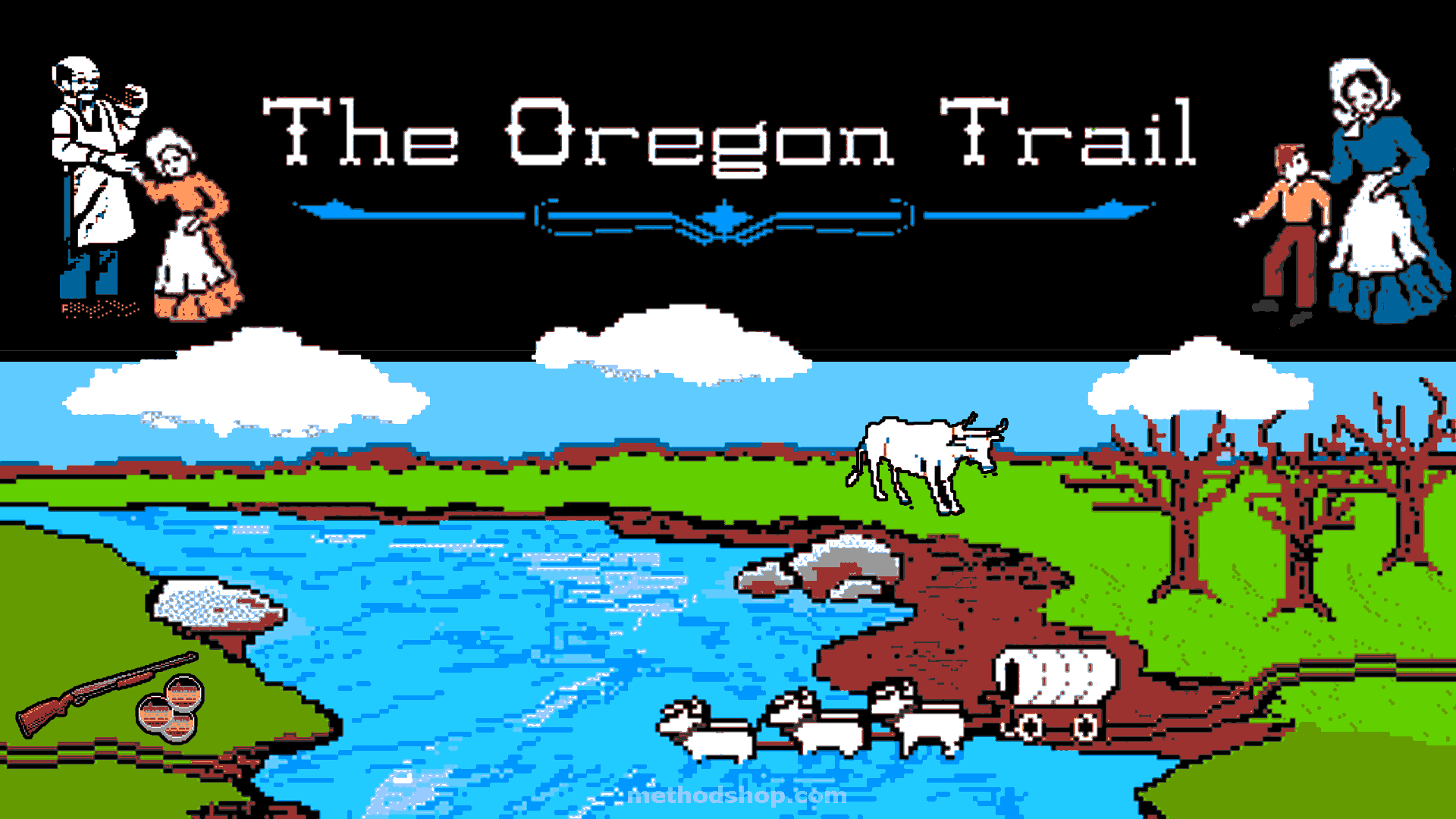
Oregon Trail was the go-to game on many home computers through the late 80s and 90s. Millions of copies of the game were sold, and young gamers enjoyed stocking up on oxen, hunting for survival, and making their way westward.
Playing the game is easier now since you can play the Oregon Trail online as a browser game on this website: https://classicreload.com/oregon-trail.html.
But the question remains: how much of the Oregon Trail video game resembled the real lives of the pioneers in the 19th century?
You’ll be surprised to learn that the Oregon Trail games are almost totally accurate. However, there are some things about living in the wild west that the game represents inaccurately for the sake of entertainment.
Here are nine myths you might believe because of the Oregon Trail game:
1. Using Oxen Was Common
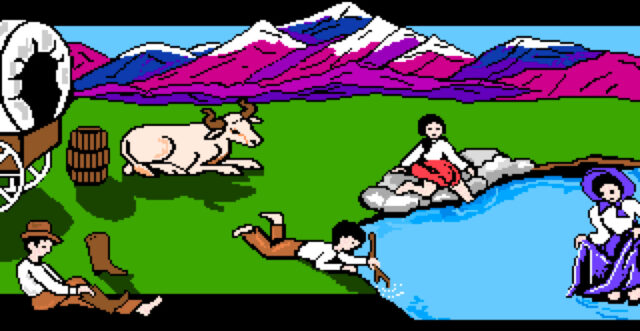
The game only provides players with oxen as a means of travel; however, many pioneers traveled by other means.
In the late 1850s, oxen were considered the best mode of transport since they were cheaper and more durable. Bandits didn’t want to steal the oxen, and the animals would graze on virtually anything. For these reasons, they were a common means of transport at the time.
However, pioneers that didn’t have the money to get oxen would use handcarts to pull their belongings with them. On the other hand, well-endowed pioneers chose to travel with horses and mules.
2. Travelling Fast Was Easy
The Oregon Trail game allows you to set the pace of your wagon, and the “grueling” option would allow players to finish their journey much faster. That said, it took a toll on the party’s health, which could make the gameplay more complicated for players.
The reality of the Oregon Trail is very different. Firstly, journeying the Oregon Trail was rarely a solitary affair. Pioneer families made their trips in wagon trains, and the group collectively decided the train’s pace. Wagon train leaders never took decisions for the group, especially those that concerned the pace of travel.
The topography of the area and the weather were the other determining factors of a wagon train’s pace.
3. Fording a River Was Easy
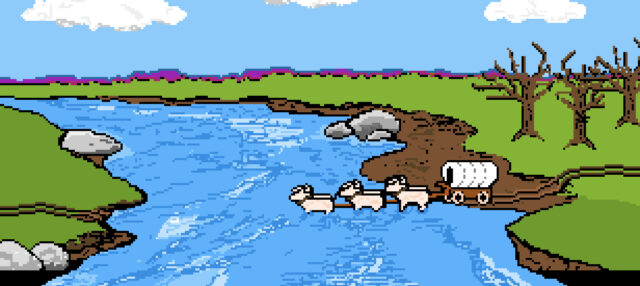
In the Oregon Trail game, players can decide to ford a 50-foot-deep river in a few taps. But on the real Oregon Trail, it wasn’t this easy.
As mentioned earlier, pioneers would travel westward in wagon trains, and decisions were made collectively. This included fording, caulking, and ferrying decisions, and deciding between them was rarely a guessing game. The pioneers made smart moves based on the circumstances.
It’s also important to remember that fording a river is dangerous and could lead to deaths if not done right. The water levels would determine the safety of a ford, and when the levels were high, pioneers avoided fording.
4. Killing Thousands of Pounds of Buffalo Was Real
Hunting for food in the game was easy and fun. You could acquire thousands of pounds of buffalo and deer meat, only carry a fraction of it, and do it again.
In reality, when the pioneers first started to journey westward, there was a lot of game to hunt. However, after the 1850s, most livestock on the trail was hunted out.
Hunting for food was very dangerous, and many wouldn’t do it in the first place. Pioneers would have to go off the trail to look for a game, and it was easy to get disoriented when you went off the trail.
Furthermore, most pioneers had guns for scaring animals away from their farms and didn’t know how to use a gun. For this reason, many pioneers that owned guns didn’t bother carrying them on the trail.
Hunting a bear was out of the question for the majority of the pioneers.
5. Dysentery Is Only a Funny Meme
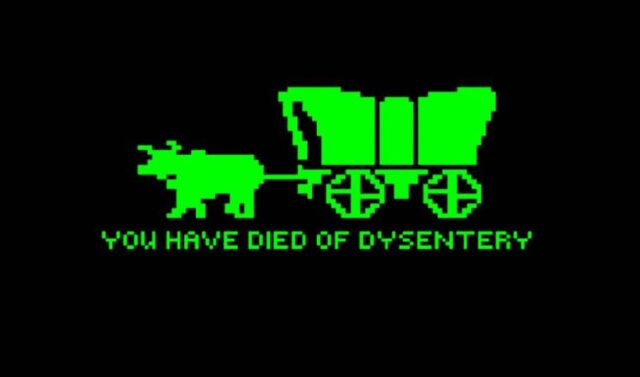
It’s common for party members to die of dysentery in the Oregon Trail game, and the experience is so common that the game’s dysentery deaths turned into a popular meme.
But dysentery was a severe issue for the pioneers that resulted from drinking bad water. They would experience diarrhea with blood which led to severe dehydration and death.
Cholera was another difficult disease the pioneers had to deal with, but dysentery was a systemic threat. As time passed, the trail’s condition got worse, increasing the risk of dysentery and death for pioneers.
Additionally, as the campsites on the trail got crowded, the spread of diseases was exacerbated. Historians believe that the conditions were too horrific to be treated as a joke in a game.
6. Everybody Got a Headstone
The funny random names of family members in the game and the ability to write a silly headstone are highlights of the Oregon Trail game. For many players, it was an opportunity to use curse words.
Death was common on the Oregon Trail, with the Bureau of Land Management estimating between 20 and 30 thousand deaths. However, gravestones were not common.
If someone died of infectious disease on the trail, the pioneers would bury them quickly to prevent spread and keep the wagon train moving. Burial sites were covered with rocks so wolves wouldn’t attack the bodies.
Making a grave wasn’t an option since it would likely get run over by a wagon later. There are some notable graves on the trail, but these are more of an exception than a rule.
7. Native Americans Took Your Clothes
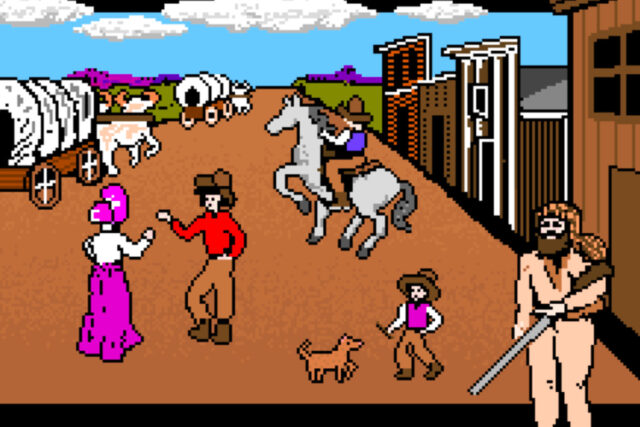
In the game, you can take the help of Native Americans and cross the river in exchange for some clothes. However, on the trail, this wasn’t a real thing.
Native Americans would trade guns, ammunition, horses, alcohol, freshwater, and food with pioneers, but they rarely traded clothes. The relationship between the natives and pioneers was friendly and helpful.
Over time, the relationship got frayed since the tribes had little to offer. The trail developed well enough for travelers to use without much help. Later in the 1860s, during the cattle drives, violence between the Native Americans and settlers became the norm.
8. Rapid Rafts Were Common
Towards the end of the game, players can choose to take exciting rapid raft rides. On the real Oregon Trail, though, you wouldn’t want to put your family on a raft and hope for the best.
9. Heading West Wasn’t Very Difficult for Farmers
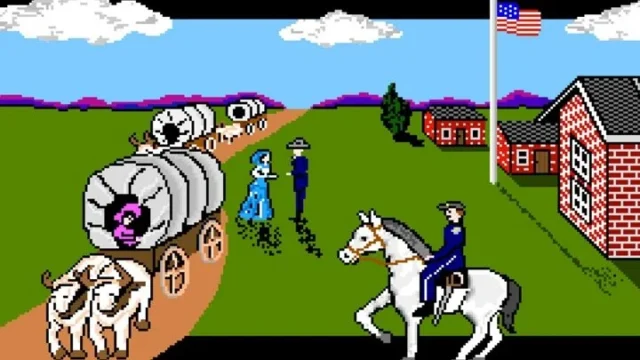
At the beginning of the game, you can choose a leader profile, and most players would choose the banker. It made the game easier, and the farmer profile was only for players that wanted a high score.
But traveling the trail as a farmer was challenging since going on the trail was expensive. Travelers needed six months of food and a reliable wagon to reach their destination. Farmers that started on crummy wagons failed.







